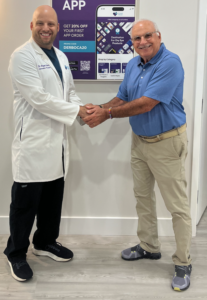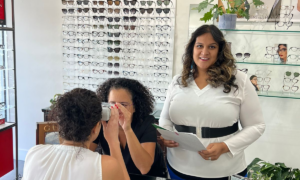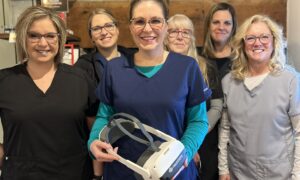
Photo credit: Getty Images
The value of a prudent, yet liberal, return & refund policy.
By Ronald P. Snyder, OD, FAAO
May 29, 2024
When unhappy patients call or approach your front desk asking for a return and refund, what is your team’s usual response? At many independent practices, it is not positive and patient-pleasing.
An experience at a big-box retailer reminded me of all there is to gain by having, within reason, a liberal return and refund policy.
What Should You Accept As Reason for Return & Refund?
Recently, I was in the return line at Costco. The woman in line ahead of me was returning half of a roasted chicken. The Costco employee inquired, “What’s wrong with the chicken?” The customer replied, “It was too big and I couldn’t eat it all.” Without any argument from the Costco employee, a full credit was issued to the customer.
Other Articles to Explore
Why, you ask? Because in the big scheme of things, this refund represented an insignificant financial loss, and more importantly, Costco retained the loyalty of the customer by providing a no-hassle return and refund.
The Power of Offering Refund But First Looking for Solution
When I was in practice, a former patient entered my office and, in front of a full reception room of patients, loudly complained that her new eyeglasses were terrible and demanded a full refund.
I happened to overhear the conversation and invited the irate woman to come inside my office to talk. The first thing that I said was, “I am very sorry for your experience,” and then I said, “Most certainly, I will give you a full refund.”
The woman immediately calmed down. I then asked her to tell me what was wrong with her new glasses.
She explained that “this ‘arm piece’ is hurting my ear.” I then asked if I could look behind her ear, and yes, it was red. I expressed sympathy and asked if I could make an adjustment to the temple.
After making the frame adjustment, the patient was delighted and the need for a refund became a moot point.
Now, let’s analyze this scenario from a practice management point of view. First, I apologized and showed genuine sympathy. Secondly, I disarmed the upset patient by offering a refund, and lastly, I resolved the patient’s complaint. She continued to be my patient for many years.

Dr. Snyder (right as you look at the photo) shaking hands with Ryan Beck, OD, the medical director of the Dry Eye Rescue Clinic. Dr. Snyder says independent practitioners like Dr. Beck have to be conscious of limiting the expense of refunds while also being sensitive to patients’ needs and feelings.
When to Set Boundaries or Conditions on Return & Refund
A patient came back to the office to return his new eyeglasses. He claimed that he was allergic to the frame. Before purchasing a replacement frame, he asked if he could test another frame to determine if he was allergic to that one, as well.
He asked if I could leave him alone while he tested the frame, so I left for a few minutes. When I returned, he stated, once again, that he was allergic to this frame too, and proceeded to request another frame to test.
I decided to play his game and humor him. This time, when I returned, he said that he was not allergic to the frame. Recognizing that the patient didn’t have all his marbles, I asked if I could watch him test the frame for allergies.
He pulled out a small leather pouch which contained a plumb bob-like weight tied to a string. He laid the frame on the counter and dangled the plum bob over it. He said, “You see, I am allergic to this frame.” Then he dangled the plum bob over the second frame and said, “You see, I am not allergic to this frame.”
I was baffled, because truthfully, I didn’t see any difference between the two tests. He then explained, the plumb bob was swinging in a circular counter clockwise direction over the frame to which he was allergic. For the non-allergic frame, the plum bob was swinging in a clockwise direction, hence, no allergy. No refund was necessary, but I enjoyed the encounter.
Striking a Balance Between Happy Patient & Not Getting Taken Advantage Of
The first goal should be creating a happy, long-term loyal patient. If you can’t find a solution to the patient’s complaint–and that complaint is valid–it’s often worth simply apologizing and saying yes to the return and refund. The positive word-of-mouth and returning patient is often well worth the expense.

Ronald P. Snyder, OD, FAAO, is the president and CEO of HealthCare Registries, LLC. To contact him: RonSnyder@HealthCareRegistries.com

























